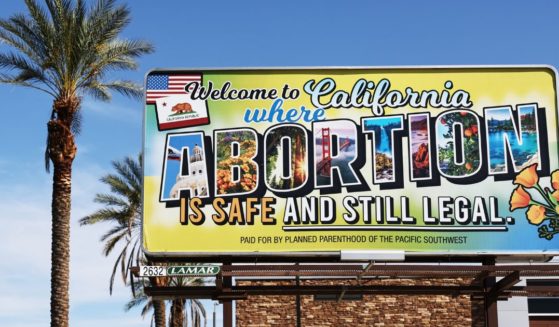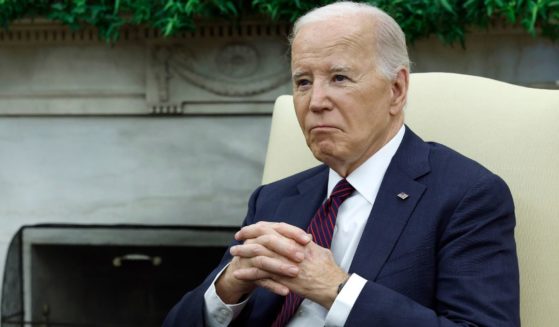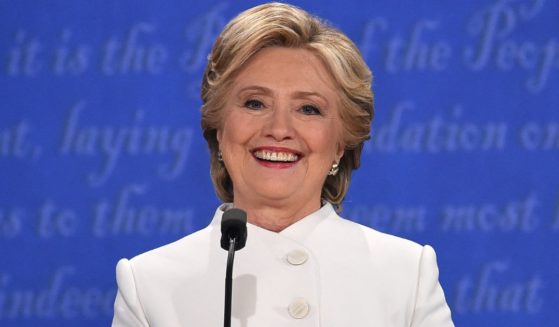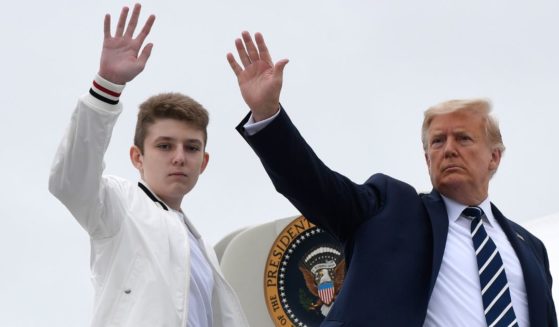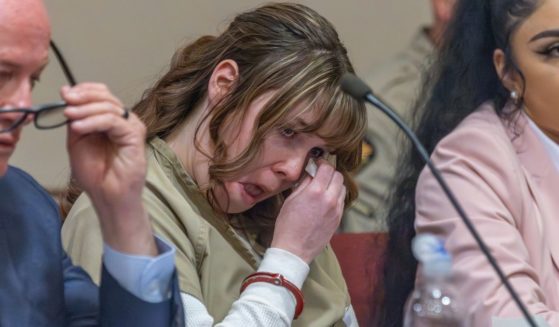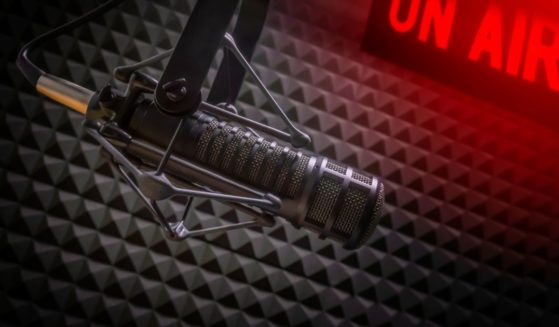Breaking: Leaked Document Reveals Trump's 'Guidelines' for Reopening the Economy
President Donald Trump on Thursday unveiled a set of “guidelines” to U.S. governors for reopening the nation’s economy.
The announcement came as the president participated in a conference call with the country’s governors. Trump later revealed the guidelines to the public during the daily coronavirus task force briefing.
“You’re going to call your own shots,” Trump told the governors, according to The New York Times. “We’ll be standing right alongside of you and we’re going to get our country open and get it working. People want to get working.”
The specific guidelines drawn up by the White House and distributed to the governors, titled “Opening Up America Again,” do not include any specific dates for getting things back to normal.
Major News Conference tonight, the White House at 6:00 P.M. (Eastern), to explain Guidelines for OPENING UP AMERICA AGAIN!
— Donald J. Trump (@realDonaldTrump) April 16, 2020
Rather, the three phases outlined by the document are a series of recommendations that the White House says is “based on up-to-date data and readiness; mitigates risk of resurgence” and “protects the most vulnerable,” according to CBS News’ Ed O’Keefe.
They are “implementable on statewide or county-by-county basis at governors’ discretion,” the White House added, meaning Trump is leaving it up to the governors to decide whether to put them in place, and when.
The three phases outline a plan in which Americans can gradually return to work while making sure they stay safe.
“Places with declining infections and strong testing would begin a three-phased gradual reopening of businesses and schools, with each phase lasting at least 14 days, meant to ensure that the virus outbreak doesn’t accelerate again,” The Associated Press wrote in summing up the document.
Phase One includes the most stringent guidelines.
“‘Phase one’ calls on employers to telework where possible, return to work in phases, minimize non-essential travel and make accommodations for the vulnerable populations within the workforce. It calls on all vulnerable individuals to ‘shelter in place,’ and when in public, all individuals should continue social distancing,” ABC News reported.
“In ‘phase two,’ non-essential travel for employers can resume. Schools and organized youth activity can reopen. Bars, gyms and large venues can reopen with proper social distancing measures in places. Churches can open with social distancing. Elective surgeries can resume.”
Over time, the guidelines relax, and by Phase Three, vulnerable populations are able to “resume public interactions,” while still practicing physical distancing.
“Large venues,” the document says — including sit-down restaurants, sporting venues and places of worship — “can operate under limited physical distancing protocols” in Phase Three.
A copy of the guidelines obtained by ABC can be seen below:
Reopening Guidelines by ABC News Politics on Scribd
The White House is also putting an increased emphasis on “contact tracing” in communities around the country.
According to The Times, “contact tracing” describes the process by which medical personnel “track the spread of the coronavirus by getting in touch with people who test positive to see who they have had contact with three or four days before they started showing symptoms.”
The Centers for Disease Control and Prevention is reportedly set to hire hundreds of people to carry out this task.
Trump’s guidelines are just that — guidelines.
Similar to the White House’s social-distancing guidelines, which run through April 30, they will not carry the force of law, though as CNN pointed out, they do “carry the weight of the federal government and the presidency.”
According to The Times’ Jonathan Martin, Trump told governors that they could open up their states before May 1 if they thought it was appropriate.
Trump, reverting to more of a federalist approach tells the govs:
“You’re going to call your own shots” and promises: “We’ll be standing right along side of you.”
— Jonathan Martin (@jmartNYT) April 16, 2020
“We want them to open” and “that’s good with us,” Trump reportedly said, noting that states who have been harder hit by the pandemic can take longer to get back to normal.
During a conference call with House lawmakers Thursday morning, Trump talked about the importance of reopening the U.S. economy, mentioning the protests that have taken place in some states against mandatory “stay-at-home” orders and arguing that 29 states were prepared to reopen, The Times reported.
Just this week, thousands of people marched in Michigan to protest Gov. Gretchen Whitmer’s stay-at-home order.
Protests also took place in Raleigh, North Carolina, and Columbus, Ohio.
In Kentucky, demonstrators chanting slogans like “we want to work” even managed to interrupt Gov. Andy Beshear’s televised briefing.
No one argues that the coronavirus pandemic hasn’t taken a massive toll on the U.S. economy.
In recent weeks, more than 22 million workers have filed for unemployment benefits, The Wall Street Journal reported Thursday.
The effect of government-imposed shutdowns was seen in Pennsylvania on Tuesday, as a two-mile-long line of cars waited to receive food from a local food bank.
“There has to be a balance,” Trump said at a news conference Wednesday. “When you look at mental health, when you look at suicides; suicide hotlines, which are exploding; people losing their jobs. When you look at drugs, and people that didn’t take drugs and now they’re becoming drug addicted because they’re going through a problem.
“They have no job. They have no money coming in — other than the money we’re getting them.”
Trump said governors will open up their states “as they see fit.”
“They’re going to open it up as they see fit,” he said. “And we’re going to be right behind them. And we’re — we’re going to be working. We’re going to be supplying them with things if they don’t have them. We want them to have them.”
Truth and Accuracy
We are committed to truth and accuracy in all of our journalism. Read our editorial standards.

